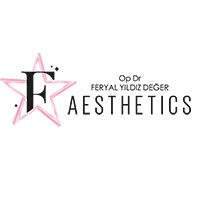FACE FILLING

There are five separate layers in the facial region, from skin to bone. The aging process of each is different. In order for the face to be perceived as young, dynamic and beautiful according to today’s aesthetic values, it is desired that the mid-face area, mainly cheekbones, is full, the lower eyelid cheek transition is faint, the lips are full and shaped, and the jaw line is strong. In addition, they may demand some changes that will emphasize the masculine or feminine character structures of the people. Fillers are compatible with the body, have a low risk of reaction and are generally obtained by synthetically producing biochemical molecules that are already present in the body. They can be applied in practice conditions in a short time without the need for preliminary preparation and a significant recovery process. However, since the facial area is a very rich area in terms of blood vessels, it must be applied by competent dermatologists and plastic surgeons who have been trained on this subject.
A droopy, old and tired expression may occur due to the loss of volume in bone structures and soft tissues that occur congenitally or with age. Although fillers do not offer as definitive and permanent solutions as surgery, they are indispensable materials especially for providing changes that do not require surgery, replacing volume loss and increasing skin quality and brightness.
Filling materials with different content and fluidity can be used to support the existing 5 layers of the face. Supporting the bone structure will both lift the soft tissues on it and provide extra volume to the bone and make the area we want to emphasize more visible. Supporting deep fat pads will also provide the same effect in different regions. In addition, it is possible to modify the contraction strength of the muscles with applications made under and above the muscle and thus correcting the existing muscle asymmetries, if any. This is called dynamic fill application.
The effect is seen immediately during the filling application, and it provides the luxury of attending even special days without a significant recovery process other than lip filling. In addition, it is possible to perform the application interactively with the patient and to respond more effectively to their expectations.
The two filling areas that I will first recommend to patients of all ages and which are my personal favourites, are cheekbones and lip augmentation. Lip filling is applied not only for volume but also for shaping. It helps to achieve a more dramatic appearance in young people and a younger appearance in middle age. Cheekbone filling, on the other hand, is a very effective application area in lifting the entire face and providing the oval of the face.
What is Face Filling?
Facial filling is the general name of filling applications made to the face area. It covers temple filling, forehead filling, cheek filling, mid-face filling, under-eye filling, nose filling, chin filling, lip filling, jaw line filling. Generally, synthetic copies of hyaluronic acid molecules that are commonly found in our body are applied. Hyaluronic acid has water retention. Thus, it will gain some volume where it is applied. When applied under the skin as mesotherapy, it has the effect of increasing the moisture rate and brightness of the skin. The volumizing effects of hyaluronic acid fillers are evident due to their water retention effects.
Why is Face Filling Done?
Facial filler is applied to lift soft tissues that have been displaced downwards by the effect of gravity, to complete the lack of volume and to improve skin quality. It can also be applied to achieve a more feminine or more masculine appearance. Correction of existing asymmetries on the face and modification of muscle movements are other application areas.
Who Is Face Filling Suitable For ?
Facial filling can be applied to healthy individuals over the age of 18, who have no previous history of allergy to filling materials, who are not during pregnancy or breastfeeding.
What are the Types of Face Fillers?
Facial filling is the general name of filling applications made to the face area. It covers temple filling, forehead filling, cheek filling, mid-face filling, under-eye filling, nose filling, chin filling, lip filling, jaw line filling.
Is Face Filling Permanent?

Filling applications made with filling materials, which are generally preferred today, are not permanent applications. They must be reapplied periodically. Depending on the filling material used and its fluidity, it provides permanence between 6 months and 18 months. However, no filling material melts 100% and some residual material remains. Thus, a decrease in the amount of filling required in repetitive applications will occur.


